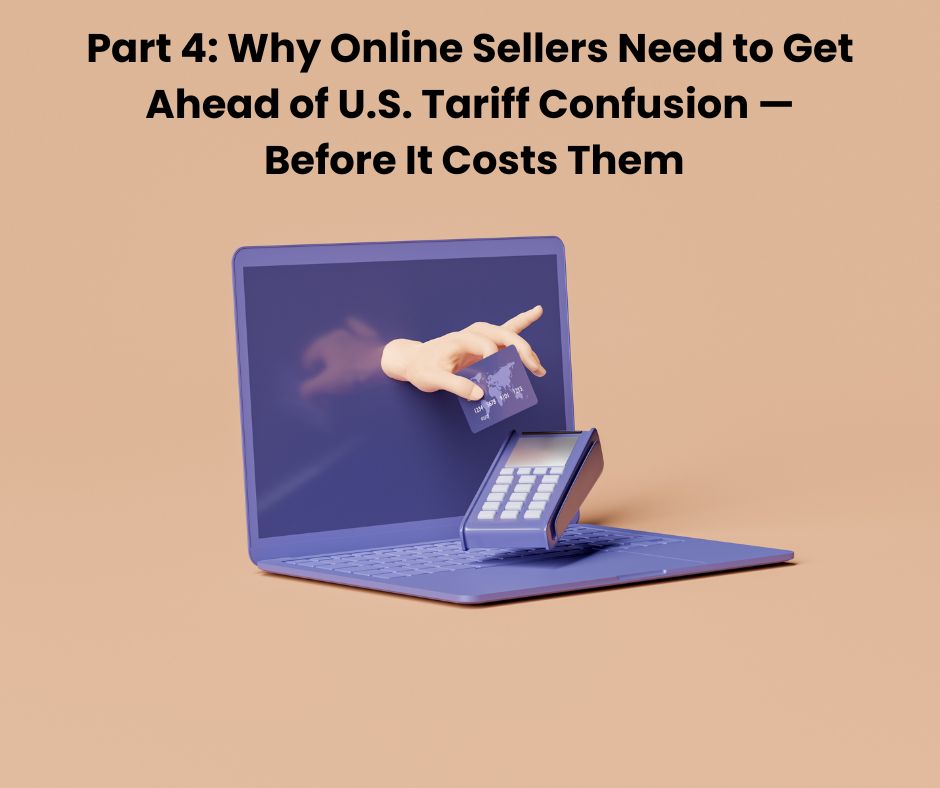Why Online Sellers Need to Get Ahead of U.S. Tariff Confusion — Before It Costs Them

Part 4 of a 4-Part Deep Dive for Global Online Sellers.
As U.S. tariffs continue to shift, especially with the growing scrutiny around goods made in China, online sellers shipping direct-to-consumer into the U.S. need more than just a solid product — they need a clear tariff strategy.
The problem? Many U.S. consumers are still unaware that they might have to pay tariffs upon delivery — and that lack of understanding is creating a painful (and costly) ripple effect for e-
A Real-World Example from an Australian Seller
One company selling fashion items, who manufactures in China and ships directly to U.S. customers, has made the tough decision to shut down her U.S. store.
Not because they couldn’t manage tariffs or logistics — but because too many U.S. customers were refusing to pay the Chinese-origin tariffs at the point of delivery.
What happened next?
The items were
Why You Need to Educate Your U.S. Customers Now
To avoid similar pitfalls, sellers must start educating customers upfront about:
· What tariffs are and when they apply
· How the country of origin affects U.S. customs charges
· Whether any duties or taxes are due at delivery (DDU)
Transparency is your best defence.
The more you inform customers before they click “Buy Now”, the less likely they are to refuse a shipment — and the less you’ll spend on costly return shipping.
Consider U.S. Distribution or Bonded Warehousing
If you're scaling or consistently selling into the U.S., consider moving stock into a U.S.-based distribution centre or bonded warehouse.
Here’s why:
· No surprise tariffs at delivery for the customer
· Faster, cheaper domestic shipping options
· Easier to handle returns and customer service
· You can manage customs clearance once, in bulk, instead of shipment by shipment
Bonded warehouses also allow you to store goods in the U.S. without paying duties upfront — until the goods are sold or removed for delivery.
Pro Tip: Add a Tariff Disclaimer at Checkout
Even if you’re still shipping direct from overseas, add a clear note like:
“This item is shipped from outside the U.S. and may be subject to import duties or tariffs based on your location. Please check your local requirements before purchase.”
It shows you care about transparency — and can protect your bottom line.
Bottom Line
If you’re an e-commerce seller outside the U.S., don’t wait for customers to be caught off guard by tariffs. A little upfront education, and possibly rethinking your fulfilment model, could save you thousands — and your reputation.
Need help weighing the pros and cons of distribution centres, or want a plug-and-play customs disclaimer for your site? Just ask — we’re here to help. Join the Global Passports e-Commerce program. Find out more by emailing info@gtpalliance.com or info@emtc.org